Trolling is a method that has its advocates and its knockers in equal measure; for many it’s a lazy method of presenting lures, relying on pulling a lure past as many fish as possible to elicit a take, rather than through any skill or working of the lure by the angler. To me that’s a pretty simplistic and fairly inaccurate description, or at least it is to my way of trolling.
I ought to add here, before we go too much further, that there really are two types of trolling, those being with lures or with baits. Bait trolling I will leave for another day as lure trolling is probably the most popular method. [You speak for yourself Mr Barrett, I just love trolling livelies! – Ed.]
So let’s take a look at the tackle that you will need for trolling lures.
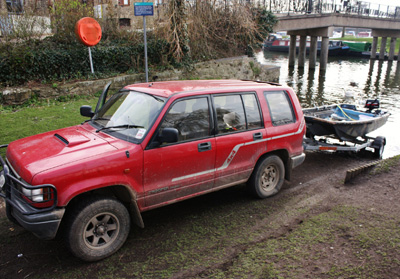 First of all, and most obvious of all, is that you are going to need a boat and an outboard motor. You can troll some lures on an electric motor but your batteries are not going to last very long! When it comes to buying a boat, always go for the biggest that you can, as a bigger boat will give you more room and be more stable platform to fish from.
First of all, and most obvious of all, is that you are going to need a boat and an outboard motor. You can troll some lures on an electric motor but your batteries are not going to last very long! When it comes to buying a boat, always go for the biggest that you can, as a bigger boat will give you more room and be more stable platform to fish from.
Likewise when you are looking for a motor go for the best that you can afford and that is allowed on the water that you’re primarily going to be using it on. As an example if you are likely to be fishing strong flowing rivers or big lakes, then a 4hp motor may be too small, but on smaller waters that may be all that’s allowed or that is allowed by the controlling body. My 13ft Dory has a 4 stroke 4 horse power engine on it and I can range over 15-20 miles in a day without spending all my day travelling and Dory’s are heavy units, on a lighter aluminium boat you would get even more speed. Personally I would always go for a 4 stroke engine over a 2 stroke as 2 strokes are gradually being phased out and a four stroke is cleaner and quieter than a two stroke and you won’t have to mess about mixing oil and petrol either.
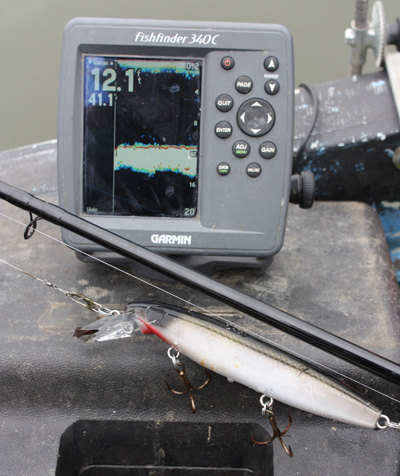 Another important item to have with you is a fish finder. Knowing the depths that you are fishing over is vitally important with trolling as you will want to match the depth that your lures are working to that of the bottom, especially if you are trolling for zander or perch. Whilst pike will on occasion chase lures up over quite long distances, zander and perch are far less keen to come very far up the water column to take lures, though you should never rule that out completely as there are always fish that want to re-write the rule book. Having a fish finder means that you can quickly make adjustments before the lure reaches that area as well as showing you prey fish concentrations and areas where it may be worth spending some time working.
Another important item to have with you is a fish finder. Knowing the depths that you are fishing over is vitally important with trolling as you will want to match the depth that your lures are working to that of the bottom, especially if you are trolling for zander or perch. Whilst pike will on occasion chase lures up over quite long distances, zander and perch are far less keen to come very far up the water column to take lures, though you should never rule that out completely as there are always fish that want to re-write the rule book. Having a fish finder means that you can quickly make adjustments before the lure reaches that area as well as showing you prey fish concentrations and areas where it may be worth spending some time working.
Rods are always one of those topics that end up coming down to personal choice and much will depend upon what type and size of lures that you are likely to be using. Personally I have two rods that I use for trolling: A Fox Rage purpose built trolling rod that I use for small to fairly large crankbaits and a medium 7ft jerkbait rod that I use for big spoons, soft rubbers and crankbaits. Pretty much any medium spinning rod will do for crankbaits up to 6-7 inches in length as long as there is a certain amount of bend to the tip section. This is important so that you can see the tip vibrating to the action of the lure and so there is a certain amount of bend to absorb the take when it comes.
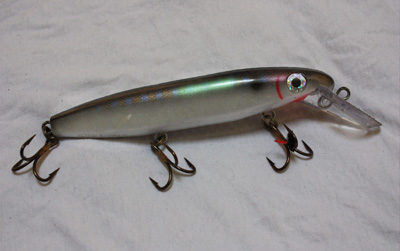 Reel choice again is down to personal preference. You can perfectly happily use any fixed spool type reel of a heavy duty nature, such as a Baitrunner, but personally I prefer to use a multiplier in the ABU or Shimano 6500 size.
Reel choice again is down to personal preference. You can perfectly happily use any fixed spool type reel of a heavy duty nature, such as a Baitrunner, but personally I prefer to use a multiplier in the ABU or Shimano 6500 size.
Whichever model you choose couple it to braid ranging from 30-65lb depending upon the depth you are looking to troll and the lures being used. Lighter braid gives you a greater diving depth, but less impact resistance and it isn’t really suitable for bigger lures or stiffer rods. If you are getting into trolling you may also want to invest in some specialist trolling rests – now widely available via specialist predator suppliers – which allow you to set your rods at the perfect angle and out of the main boat area to maximise space.
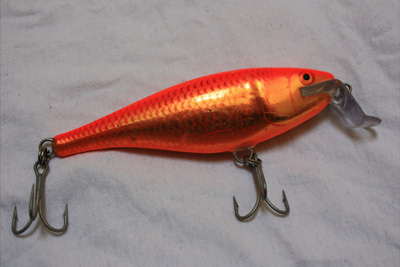 Finally you are, of course, going to want some lures. There are many types of lure that are suitable for trolling, but the main type used are the crankbaits that dive upon retrieve. My favourite patterns of crankbaits are Rapala Super Shad Raps, X-Raps, Bucher Depth Raiders in baby, full and jointed versions, Berts, Ernies, Believers, Storm Deep Thunders and Jakes. However just about any floating, diving crankbait is worth a try.
Finally you are, of course, going to want some lures. There are many types of lure that are suitable for trolling, but the main type used are the crankbaits that dive upon retrieve. My favourite patterns of crankbaits are Rapala Super Shad Raps, X-Raps, Bucher Depth Raiders in baby, full and jointed versions, Berts, Ernies, Believers, Storm Deep Thunders and Jakes. However just about any floating, diving crankbait is worth a try.
So we have the right gear, how do we go about trolling? In essence as I mentioned right at the start trolling is essentially dragging lures behind a moving boat and I am sure if you stuck at that then you might well catch a few, but with greater thought you will catch a whole lot more.
To start with you have to realise that there are two planes in which we are working: depth and speed. Both of these are the critical factors that will define if, how much, and what you catch, so when you set out you need to pick lures in the first instance that will cover those two planes.
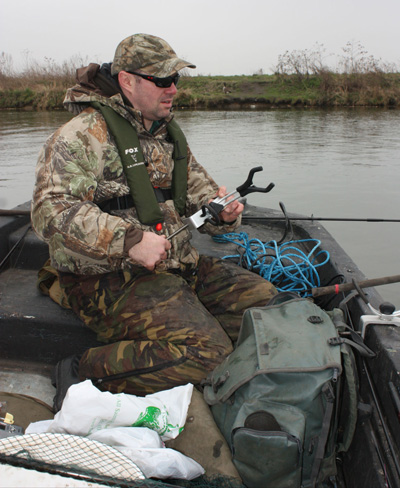
On top of that you need to consider the water that you are fishing. Is it deep, shallow, weedy, coloured or clear? Does it have lots of features, especially great differences in depth, or is it pretty much featureless? All of these will influence how you approach the water, as a water with lots of variations will mean that you have to chop and change more often, whereas a featureless water will need less changing of lures and depths and speed may be more of an issue.
As a very basic approach I would start off trolling about walking pace with a lure on one rod that will get down to within a foot or two of the bottom and on the second rod one that will troll around, or just under, half depth. This covers the most likely take zones as most predatory fish will prefer to strike upwards at a meal, in fact in the case of pike they see far better looking up than they do looking forward so a bait at half depth will be more visible than a deeper running one.
Most important is that the lure is working properly. You can check this by making sure that the tip is throbbing backwards and forwards and by running the lure at your trolling speed alongside the boat to check it.
When you have everything going along nicely don’t just set off in a straight line and troll off into the sunset on that same line. When I am trolling I always do so in a lazy zigzag motion. The reason for this is not only do you cover more water, but as you zigzag so the lures will slow or speed up depending upon what side of the boat they are on. You will be amazed just how many times this leads to a take. Likewise, don’t just hold the rod or leave your rods sitting in a rest but pull them forward, let them go slack, vary things as this makes the bait move erratically and can buy you those extra takes.
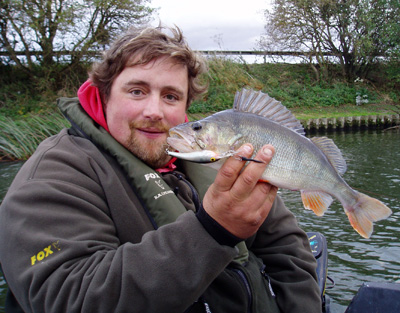 One final tip to make sure that your lure works as close to the bottom as possible is to cast it behind the boat and then motor off until you reach your planned trolling speed, then watch the tip. If there’s just a constant throbbing from the lure then let out a bit more line until the tip starts to thump and pull round where the lure hits the bottom. At this point reel in a little line until the lure no longer fouls the bottom; you will then be running nice and tight to the deck – and hopefully into the jaws of a hungry pike or zander!
One final tip to make sure that your lure works as close to the bottom as possible is to cast it behind the boat and then motor off until you reach your planned trolling speed, then watch the tip. If there’s just a constant throbbing from the lure then let out a bit more line until the tip starts to thump and pull round where the lure hits the bottom. At this point reel in a little line until the lure no longer fouls the bottom; you will then be running nice and tight to the deck – and hopefully into the jaws of a hungry pike or zander!
I hope that this article has piqued your interest in trolling; it really is a great, fun method with slamming takes into the bargain, what more could you ask for?











